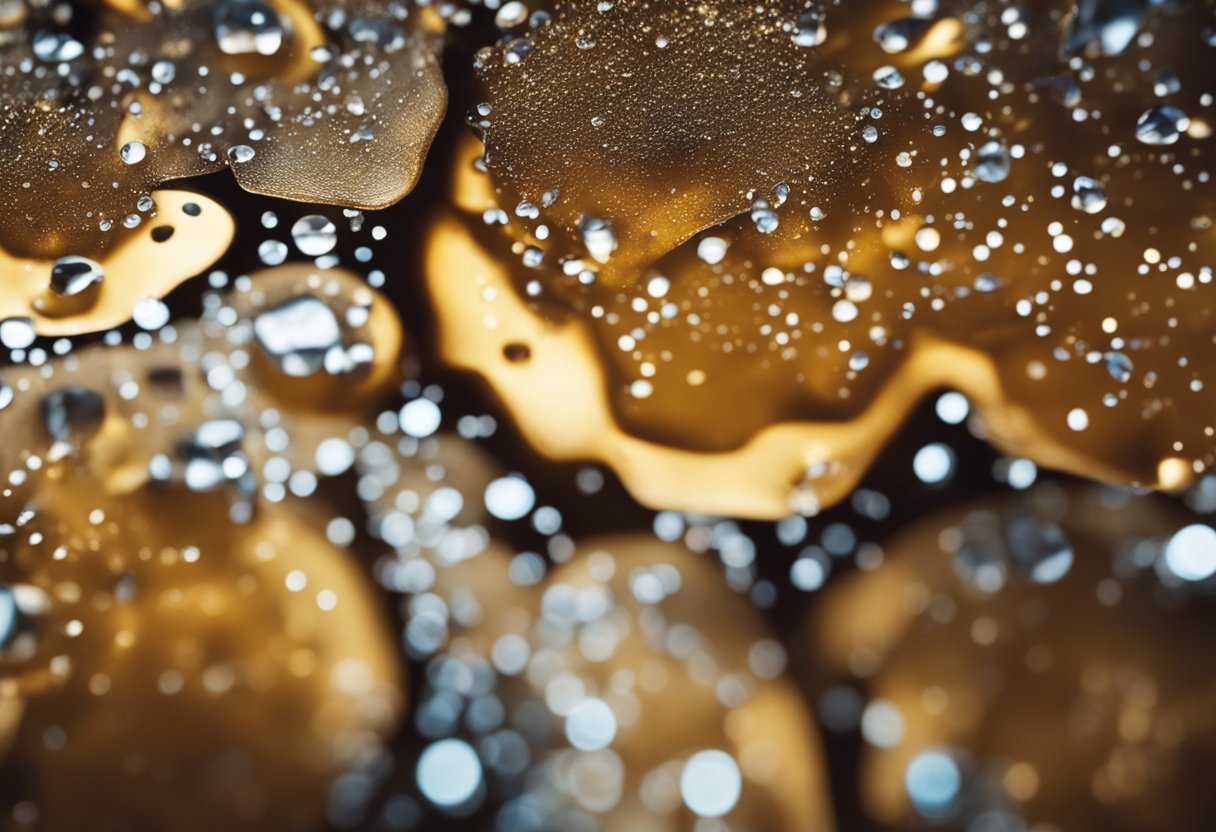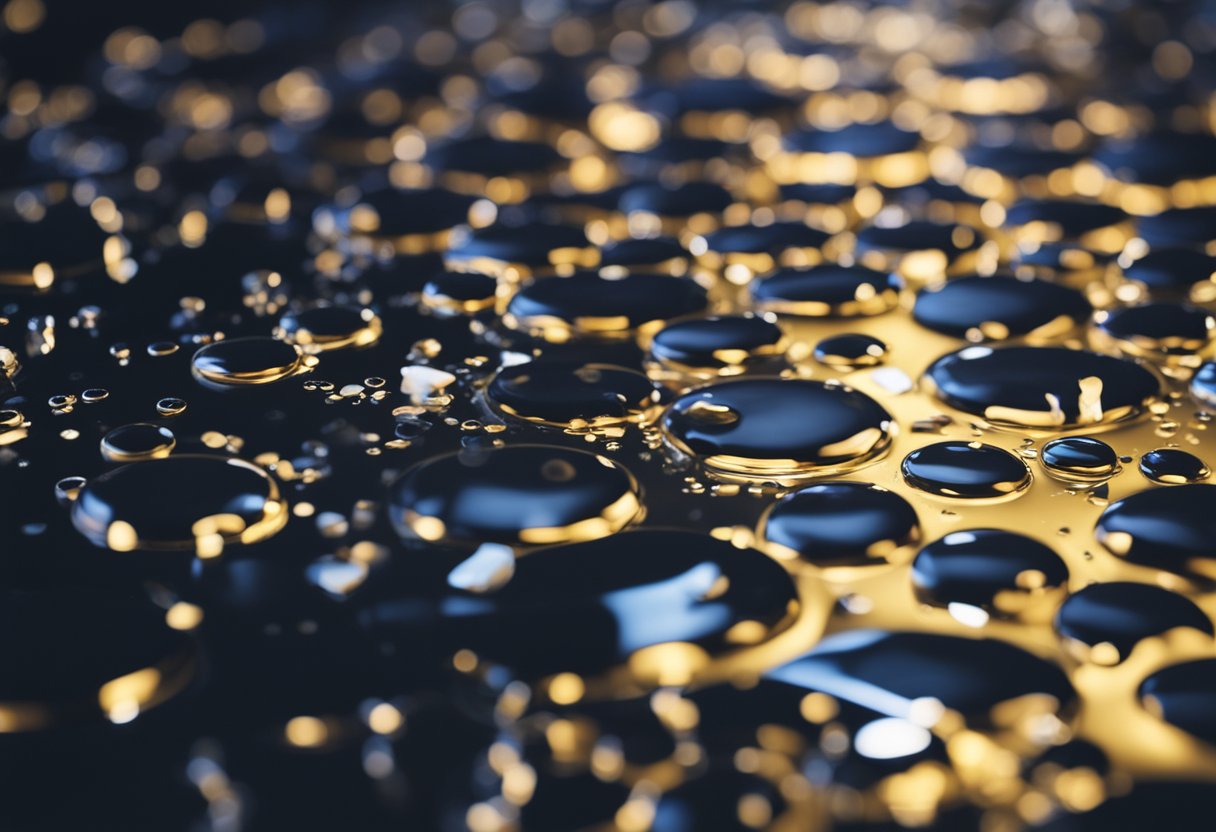I have been in situations where I have applied a stain to a surface, only to find it still tacky after a week. This can be frustrating, especially if you have invested time and effort into a project. Fortunately, there are several reasons why a stain may remain tacky and several solutions to fix the issue.
Understanding the Problem: Tacky Stain
When a stain is still tacky after a week, it means that it has not fully dried. There are several reasons why this may occur, such as excess stain, high humidity, or poor ventilation. Additionally, the type of stain used and the wood type can also play a role.
Types of Stains and Their Properties
There are several types of stains available, such as oil-based, water-based, and gel stains. Each type has its own properties, such as dry time and penetration. It is important to choose the right type of stain for your project and to follow the manufacturer’s instructions for application.
Understanding the Problem: Tacky Stain
https://www.youtube.com/watch?v=WEW4QWWwBPE&embed=true
As a woodworking enthusiast, I have come across the problem of tacky stain many times. Tacky stain is a condition where the stain applied to the surface of wood does not dry properly and remains sticky to the touch. This can be a frustrating problem, especially when you have put in a lot of time and effort into your woodworking project.
The most common cause of tacky stain is the failure of the stain to cure properly. Penetrating oil-based wood stains contain two key ingredients, binders, and pigments. Binders are responsible for holding the pigment particles together and binding them to the wood surface. Pigments give the stain its color. If these ingredients are not mixed properly, the stain will not cure properly and will remain sticky.
Another reason why stain can remain tacky is that the wood surface was not properly prepared before applying the stain. Wood surfaces need to be sanded and cleaned properly before applying the stain. If the surface is not smooth and clean, the stain will not adhere properly and will remain sticky.
Drying issues can also lead to tacky stain. If the temperature and humidity are not ideal, the stain will take longer to dry and may not cure properly. Similarly, applying the stain too thickly can also lead to drying issues and tacky stain.
In conclusion, tacky stain is a common problem that can be caused by a variety of factors. To avoid this problem, it is important to properly mix the stain, prepare the wood surface, and apply the stain in ideal conditions.
Types of Stains and Their Properties
When it comes to wood staining, there are a few different types of stains to choose from. These stains can be categorized based on their properties, such as oil-based, water-based, and gel stains.
Oil-Based Stains
Oil-based stains are a popular choice for wood staining due to their durability and long-lasting finish. These stains contain pigments and dyes that penetrate deep into the wood, providing a rich, even color. Oil-based stains are also known for their ability to enhance the natural grain of the wood.
Water-Based Stains
Water-based stains are a newer type of stain that has gained popularity in recent years. These stains are known for their low odor and quick drying time. Water-based stains are also easy to clean up with soap and water. However, they do not penetrate the wood as deeply as oil-based stains, which can result in a less vibrant color.
Gel Stains
Gel stains are a thicker type of stain that is ideal for vertical surfaces and intricate details. These stains are easy to apply and do not drip or run like traditional stains. Gel stains also provide a more consistent finish and are less likely to blotch or streak.
Combo Finish/Stain
Combo finish/stain products are designed to provide both a protective finish and a color stain in one product. These products are often used on furniture and cabinets to provide a durable finish while also enhancing the natural color of the wood.
When choosing a stain, it is important to consider the type of wood you are staining, the desired color, and the level of durability you require. By understanding the properties of each type of stain, you can make an informed decision and achieve the desired result for your project.
Influence of Environmental Factors
https://www.youtube.com/watch?v=bKBu2_vfX4s&embed=true
As a professional in the woodworking industry, I have found that environmental factors play a significant role in the drying process of wood stains. The temperature and humidity of the environment can affect the drying time of the stain. High humidity levels in the air can slow down the drying process, while low humidity levels can speed it up.
In addition to humidity, the temperature of the environment can also impact the drying time of the stain. When the temperature is too low, the stain may take longer to dry, whereas high temperatures can cause the stain to dry too quickly, leading to a tacky finish.
Weather conditions can also play a role in the drying process. For example, when it is raining or snowing, the air tends to be more humid, which can cause the stain to take longer to dry. Similarly, when it is very hot outside, the stain may dry too quickly, leading to a tacky finish.
Moisture in the air can also impact the drying time of the stain. If the air is too dry, the stain may dry too quickly and cause the wood to crack. On the other hand, if the air is too moist, the stain may take longer to dry, leading to a tacky finish.
In conclusion, the environment plays a crucial role in the drying process of wood stains. As a woodworker, it is essential to take into account the environmental factors when applying stains to ensure a smooth and even finish.
Proper Application Techniques
https://www.youtube.com/watch?v=BDZj3fFUPLA&embed=true
When it comes to staining wood, proper application technique is crucial to ensure that the stain dries correctly and does not remain tacky. In this section, I will outline the steps to take to ensure that the stain is applied correctly and dries properly.
Preparation of the Wood Surface
Before applying any stain, it is essential to prepare the wood surface. This includes sanding the wood surface with an orbital sander and grit sandpaper to remove any old finish and to create a smooth surface for the stain to adhere to. After sanding, clean the surface with a tack cloth to remove any dust or debris.
Applying the Stain
When applying the stain, it is important to use a brush to ensure that the stain is applied evenly. Apply a thin coat of stain and allow it to penetrate the wood surface for a few minutes. After a few minutes, wipe off any excess stain with a clean cloth to prevent the stain from remaining tacky.
Post Application Care
After applying the first coat of stain, it is essential to allow it to dry completely before applying a second coat. If the first coat is not dry, the second coat will not adhere properly, and the stain will remain tacky. Allow the first coat to dry for at least 24 hours before applying a second coat.
When applying the second coat, follow the same steps as the first coat. Apply a thin coat of stain, allow it to penetrate the wood surface, and wipe off any excess stain. After applying the second coat, allow it to dry completely before using the wood surface.
In conclusion, proper application techniques are essential to ensure that the stain dries correctly and does not remain tacky. By following these steps, you can ensure that your wood surface is properly stained and looks beautiful for years to come.
Specific Wood Types and Their Staining Challenges
https://www.youtube.com/watch?v=SgCy4ozVuWg&embed=true
As a professional woodworker, I have worked with a variety of wood types and have come across various staining challenges. Some wood types like teak and rosewood are exotic and require special attention when it comes to staining. Here are some of the specific wood types and their staining challenges.
Teak
Teak is a popular wood type used for outdoor furniture and decking. It is a dense wood that contains natural oils which can make it difficult to stain. The natural oils in teak can repel the stain, making it difficult for the stain to penetrate the wood. To overcome this challenge, I recommend sanding the teak wood with fine-grit sandpaper to open up the pores of the wood. This allows the stain to penetrate the wood and adhere properly. It is also important to use a stain that is specifically formulated for teak wood.
Rosewood
Rosewood is another exotic wood type that is known for its beautiful grain patterns and rich color. However, it can be a challenge to stain because it is a dense wood that contains natural oils. The natural oils in rosewood can cause the stain to dry slowly and remain tacky for a longer period of time. To overcome this challenge, I recommend using a pre-stain wood conditioner to help the wood absorb the stain evenly. It is also important to use a stain that is specifically formulated for rosewood.
Other Exotic Woods
Exotic woods like mahogany, ebony, and padauk can also be a challenge to stain. These woods are dense and contain natural oils that can repel the stain. To overcome this challenge, I recommend sanding the wood with fine-grit sandpaper to open up the pores of the wood. It is also important to use a stain that is specifically formulated for exotic woods.
In conclusion, staining wood can be a challenge, especially when it comes to exotic wood types like teak, rosewood, and other exotic woods. However, with the right techniques and products, it is possible to achieve a beautiful and long-lasting finish.
Troubleshooting and Solutions for Tacky Stains
https://www.youtube.com/watch?v=KWaDH0QX_1g&embed=true
If you’re dealing with a tacky stain, don’t worry, there are several solutions to fix the problem. Here are some of the most effective methods to remove a tacky stain:
Use of Solvents
One of the most effective ways to remove a tacky stain is by using solvents. Mineral spirits are a common solvent used to remove wood stains. Apply the mineral spirits to a rag and then rub the rag over the tacky stain. This should remove the excess stain and help it dry faster. Other solvents like linseed oil can also be used to remove tacky stains.
Reapplication of Stain
If the stain is still tacky after using a solvent, you may need to reapply the stain. Before doing so, make sure to remove the excess stain using a solvent. Then, apply a thin layer of stain and wipe off any excess. This should help the stain dry faster and prevent it from becoming tacky again.
Temperature and Humidity Control
Temperature and humidity can affect the drying time of the stain. If it’s too hot or humid, the stain may take longer to dry, and if it’s too cold, it may not dry at all. To ensure the stain dries properly, keep the room temperature between 60-80°F and use a dehumidifier to control the humidity. Also, make sure the wood is not in direct sunlight, as this can cause the stain to dry too quickly and become tacky.
By following these troubleshooting tips, you should be able to remove the tacky stain and get the finish you desire. Remember to always follow the manufacturer’s instructions when applying and removing wood stain.
Preventive Measures and Best Practices
As someone who has worked with wood finishing for years, I have learned that preventing tackiness in wood stain is much easier than fixing it after it has occurred. Here are some preventive measures and best practices to follow:
1. Clean the Surface
Before applying any stain or finish, it is important to ensure that the surface is clean and free from dirt and debris. Dirt can prevent the stain from penetrating the wood and can cause it to dry unevenly or remain tacky. To clean the surface, use a damp cloth or vacuum cleaner to remove any dust or debris.
2. Mix the Stain Well
One of the most common causes of tackiness in wood stain is improper mixing. It is important to mix the stain well before applying it to the wood. If the stain is not mixed properly, the pigments can settle at the bottom of the can, causing the top layer to dry and the bottom layer to remain tacky.
3. Use the Right Drying Time
Different stains and finishes have different dry times, and it is important to follow the manufacturer’s instructions for the specific product you are using. If the stain is not given enough time to dry, it can remain tacky and prevent the finish from adhering properly. On the other hand, if the stain is given too much time to dry, the finish may not adhere properly either.
4. Use Polyurethane or Varnish
Polyurethane and varnish are excellent finishes that can help prevent tackiness in wood stain. These finishes dry hard and create a protective layer over the wood, preventing moisture from getting in and causing the stain to remain tacky.
5. Use Penetrating Oils
Penetrating oils are also great finishes that can help prevent tackiness in wood stain. These oils penetrate deep into the wood, providing a protective layer that prevents moisture from getting in and causing the stain to remain tacky.
In conclusion, preventing tackiness in wood stain requires proper preparation, mixing, and drying time. Using the right finish can also help prevent tackiness and ensure a smooth and even finish. By following these preventive measures and best practices, you can avoid the frustration of tacky wood stain and achieve a beautiful and long-lasting finish.
Frequently Asked Questions
How long does it take for wood stain to dry completely?
The time it takes for wood stain to dry completely depends on various factors such as humidity, temperature, and the type of stain used. Typically, oil-based stains take longer to dry compared to water-based stains. It can take anywhere from 24 hours to several days for the stain to dry completely. It is crucial to wait for the stain to dry completely before applying any topcoat or sealer.
How do you fix tacky wood stain?
If the wood stain is still tacky after a week, it is likely that the stain has not dried completely. To fix this issue, you can try wiping off any excess stain with a clean cloth. If that does not work, you can use mineral spirits to remove the tackiness. Apply the mineral spirits to a clean cloth and gently rub the affected area until the tackiness is removed.
Will tacky stain eventually dry?
Yes, tacky stain will eventually dry, but it can take longer than expected. Factors such as humidity, temperature, and the type of stain used can affect the drying time. It is important to wait for the stain to dry completely before applying any topcoat or sealer.
How to remove excess water-based stain that has dried?
Removing excess water-based stain that has dried can be challenging, but it is possible. You can try sanding the affected area with fine-grit sandpaper until the excess stain is removed. If that does not work, you can use a stain stripper to remove the excess stain. Follow the manufacturer’s instructions carefully when using a stain stripper.
How to use mineral spirits on tacky stain?
To use mineral spirits on tacky stain, apply the mineral spirits to a clean cloth and gently rub the affected area until the tackiness is removed. It is important to wear gloves and work in a well-ventilated area when using mineral spirits.
How to fix a sticky deck after staining?
If your deck is sticky after staining, it is likely that the stain has not dried completely. To fix this issue, you can try wiping off any excess stain with a clean cloth. If that does not work, you can use mineral spirits to remove the tackiness. Apply the mineral spirits to a clean cloth and gently rub the affected area until the tackiness is removed. It is important to wait for the stain to dry completely before applying any topcoat or sealer.

Hi, I’m Sal Muller of Tooltrip.com. My DIY experience led me to understand essential power tools for home projects. Tooltrip.com guides enthusiasts and professionals in choosing right tools for any job. I provide concise top tool reviews for easier, efficient DIY.





